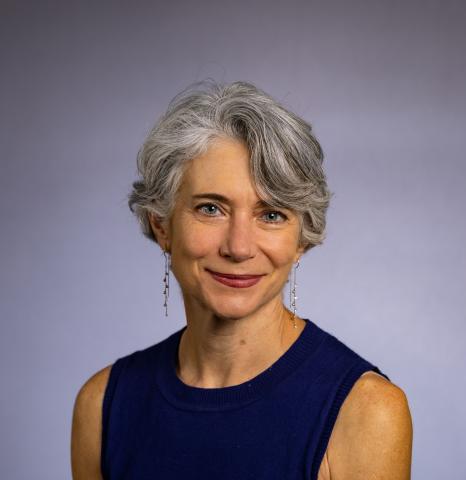Barbara Mundy
Martha and Donald Robertson Chair in Latin American Art
- Mesoamerica

Biography
Barbara E. Mundy’s scholarship dwells in zones of contact between Native peoples and settler colonists as they forged new visual cultures in the Americas. She has been particularly interested in the social construction of space and its imaginary, which was the subject of her first book, The Mapping of New Spain. Her most recent book, The Death of Aztec Tenochtitlan, the Life of Mexico City, draws on Indigenous texts and representations to counter a colonialist historiography and to argue for the city’s nature as an Indigenous city through the sixteenth century.
In the coming academic year (2021-22), Mundy will hold the Kislak Chair at the Library of Congress where she will be working on a book project, "The Embodiment of the Word: European Book Culture and New World Manuscripts." Rather than considering Indigenous manuscripts as phenomena separate from European books, the new work situates native bookmakers in the midst of the new technological revolution brought about by the printing press. While Martin Luther’s innovations (and conflagrations) take up most of the oxygen in the history of print in the early sixteenth century, attracting less attention, but equally radical, was the Spanish crown’s use of the new technology to control, via standardization, governance, language, and history. The testing ground of this imperial project was the “Indies,” as their American territories were called, and it is within this context that her protagonists--Indigenous writers, painters and bookmakers-- operated.
With Dana Leibsohn, Mundy is the co-creator of Vistas: Visual Culture in Spanish America, 1520-1820. Digital projects are a fundamental part of her teaching practice. Mundy serves as a Senior Fellow of Pre-Columbian Studies at Dumbarton Oaks, on the editorial boards of Latin American and Latinx Visual Culture and Estudios de cultura náhuatl. She is the incoming president of the American Society for Ethnohistory. Prior to coming to Tulane, she was a Professor of Art History at Fordham University in New York.
Courses
Additional Info
Number of Dissertations or Theses Supervised in the Past 5 Years: 42
Research
Art History, Colonial Mexico/New Spain, Autonomous Era America, History of Cartography
Degrees
- Ph.D. Yale University, History of Art.
- M.A., Yale University, History of Art.
- B.A., Yale College, American Studies.
Academic Experience
- Professor, Department of Art History and Music, Fordham University, 2014-2021
- Visiting Professor, Department of the History of Art, Yale University, 2018–2020
- Associate Professor, Department of Art History and Music, Fordham University, 2002-2014
- Visiting Associate Professor, Department of History of Art, Yale University, 2010
- Assistant Professor, Department of Art History and Music, Fordham University, 1997-2002
Distinctions
- President, American Society for Ethnohistory, 2022
- Senior Fellow, Pre-Columbian Studies, Dumbarton Oaks 2016-2022
- Kislak Chair, Library of Congress, 2021-22
- John Carter Brown Library Fellowship, 2017-2018
- Ailsa Mellon Bruce Senior Fellow, Center for Advances Study in the Visual Arts, National Gallery of Art, 2015-2016
Languages
- Spanish
- French
- Nahuatl
Overseas Experience
- Mexico
Selected Publications
- 2023. "The Colonial Archive and its Fictions," with Aaron M. Hyman. Colonial Latin American Review 32, 3, pp. 312-344.
- 2023. “Indigenous Image Theory.” Word & Image 39, 2, pp. 260-282.
- 2023. “Mexica space and Habsburg time.” Renaissance Quarterly 76, 2 (Summer), pp. 365-407.
- 2023. "Settler Colonialism, Families, and Racialized Thinking…" with D. Leibsohn. In Teaching Race in the European Renaissance: A Classroom Guide, A. Wainwright and M. Chapman, eds. 397-423. Tempe: Arizona Center for Medieval & Renaissance Studies Press.
- 2022. “Beyond Recognition? Orphan Objects, Decolonization, and Religious Histories of the Spanish Americas” with Dana Leibsohn. In Digital Humanities and Material Religion: An Introduction, R. McBride Lindsey and E.S. Clark, eds.177-205. De Gruyter Press.
- 2021. “Dating the Mapa Uppsala of Mexico-Tenochtitlan,” with Jennifer Saracino. Imago Mundi 73, 1, pp. 2-15.
- 2021. “The Plans of Mexico City, 1520-1810.” In A Companion to Viceregal Mexico City, 1519-1821, John López, ed. 303-327. Leiden: Brill.
- 2021. “No longer home: the smellscape of Mexico City, 1500-1600.” Ethnohistory 68, no. 1 (January 2021), pp. 77-101
- 2018. La muerte de Tenochtitlan, la vida de México. Mexico City: Grano de Sal.
